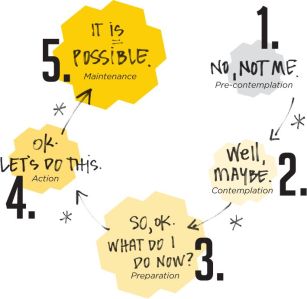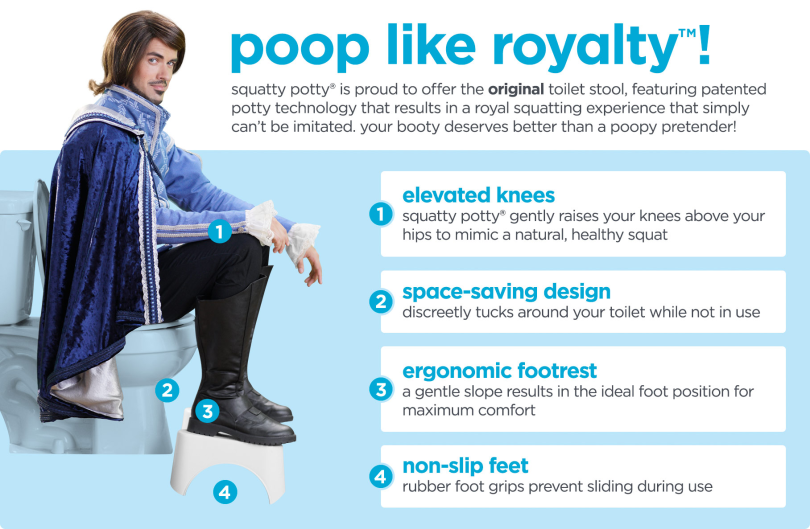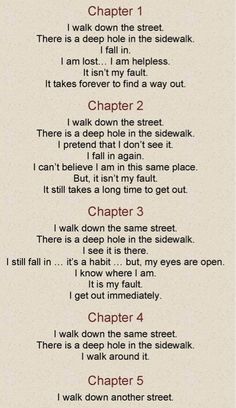Welcome to Day 11. I’ve armed you with tools, tips and tricks. We’ve talked recipes and ideas and hacks. I’ve stayed consistent with my message about balance, which can always be found on your mat and in your heart. For all practical purposes, you have what you need to keep going. The thing is, you are entering into a phase of the program that will push you in different realms, realms that can’t be soothed with some Magic Mushroom Powder or epsom salts. Your mood and emotions are one of the last-ditch efforts that your habits and your ego will call on when your will and determination are finally getting ahead. Social pressure will add to the dynamic, and it may only take once to hear, “Are you STILL doing that diet/yoga thing?” to make you cave to frustration, resentment, righteousness or dissolution.
Not everyone is going to love the Indigo30. Some of you are downright bummed out, disappointed and just plain irritated. It’s not what you expected and it’s not what you signed up for. Except that it is. But maybe the change that is occurring isn’t the change you had imagined.
Change is hard. No one likes it unless they choose it voluntarily. Let’s dissect change for a moment so you can see how it affects you, step by step.
The Stages of Change Model, also known as the Transtheoretical Model, was developed by James O. Prochaska of the University of Rhode Island, Carlo Di Clemente and colleagues beginning in 1977. It is based on analysis and the use of different theories of psychotherapy. The basic idea is that behavior doesn’t happen in just one step. People tend to progress through specific stages on their way to change, and each of us moves at a different pace. Sometimes, we go backwards and have to repeat a step over and over. In fact, some people never totally progress because they get stuck in a certain step and aren’t willing to do the uncomfortable and demanding work it takes to step off the hamster wheel, so to speak. And, trying to give someone advice or consequences for one stage while they are still in another … well, it simply doesn’t work; they aren’t ready. You’ve all experienced this yourself. If you’ve ever said, “Why couldn’t I see it when it was happening?” you know what I’m talking about and how it feels. It’s a hindsight thing. You just weren’t ready.
In each stage of change, we have to wrangle and wrestle with different issues. Messages will be heard differently, advice will be heeded or ignored, and conversation can either be considered, threaten, or dismiss. Knowing what stage you are in with certain things will also help you more insightfully understand which stage those around you in; and when you know this piece of information, your communication can be tailored in a way that’s more effective.
The Five Stages of Change include:
- Precontemplation. This is the first stage, and it’s when people are not yet acknowledging that there is a problematic behavior that needs to be adjusted, modified, replaced or totally stopped. People in this stage tend to defend their current bad habit(s) and do not feel it is a problem (sometimes it’s even your problem). They may be defensive in the face of other people’s efforts to pressure them to quit or modify. They do not focus their attention on quitting and tend not to discuss their bad habit with others. In some addiction circles, this stage is also called denial.
- Contemplation. Okay, so, there’s a problem. And, the person is still not sure they are ready to change. Here is when people have a bit more awareness that there might,
 just, perhaps be some consequences and even might spend some time thinking about the problem… but still aren’t ready to do anything about it. They weigh pros and cons, they may even consider the long-term impact, but are still not totally on board to lay down the habit and take any action. Overall they do not see yet that any benefits associated with the quitting or reduction of the habit will outweigh the short-term costs.
just, perhaps be some consequences and even might spend some time thinking about the problem… but still aren’t ready to do anything about it. They weigh pros and cons, they may even consider the long-term impact, but are still not totally on board to lay down the habit and take any action. Overall they do not see yet that any benefits associated with the quitting or reduction of the habit will outweigh the short-term costs. - Action/Willpower. Change occurs. Often because something drastic, some dramatic consequence, a serious wake-up call, or some impactful incident occurs that shifts the dynamic overall. It doesn’t always have to be negative, in fact, sometimes people move into the third stage because of something inspirational or even a program like the Indigo30, where others are participating and there is a new level of accountability. Nonetheless, the person believes they have the ability to change their behavior and are actively involved in taking steps to change. This is a miraculous stage, because it is when people start depending on their own willpower, versus the power of the default behavior. Overt efforts are made to quit or change the old habit. This is also the time when there is the greatest risk of relapse, so it’s imperative that whatever steps have been taken and the support that has been built stay intact so the person can leverage them and stay motivated.
- Maintenance. Ongoing, daily maintenance of the new habit is the ritual of this stage. Not only are the rituals maintained, but so is the willpower to avoid temptation and return to old ways. The goal of the maintenance stages is to maintain the new status quo. Progress made is a constant reminder. What one is striving for has purpose and meaning. Patience is a strong thread in the fabric of maintenance, as the person in this stage knows that it takes time to let go of old behaviors and successfully maintain new ones. Thoughts of “how I used to be” and old habits will regularly occur, but at this point, temptation is resisted.
You can probably categorize yourself as well as the people around you, witnessing your stage. Some don’t want to hear one word about what you are doing (they are in a precontemplation stage). Others may be asking you questions, and at the same time, challenging your responses — they doubt the process, argue their position and defend their behaviors (contemplation). Others are carefully watching and taking notes, gathering information and probably even planning their own journey to change. This is important for them; just as our pre-program week of preparation was for you. Diving in head first to behavior change (“cold turkey”) works for a few, but not for most. These folks are in an action stage. And finally and most excitedly, you may have people in your life who are really interested and want you to teach them what you are learning. They are committed and motivated — by you! They are in a maintenance stage.
Now remember — this stuff doesn’t just happen on its own. The habits, the behaviors and all of the effects have had lots of time to simmer. And when you cook it all down to its base, what you are left with is simple but powerful and all-encompassing for many: fear. Think about it for a moment — why, if change is something (the Indigo30, for example) that will only benefit you, make your life better, help you achieve things you never thought possible, improve all aspects of your life — why would anyone be so incredibly stubborn and reluctant to give up old patterns? In a word, fear.
Fear of admission — If you admit you have a problem, then by default, you acknowledge that you need to do something about it. Change is uncomfortable, but for many, mediocrity, status quo and old ways of being, while unproductive, ineffective, painful and even depressing, still may feel easier.
Fear of failure — Some people have tried so many times to lose weight, fix their health issues and problems, and what we see most — exercise more and eat less (only to end up eating more and exercising less) — that they consider each attempt a bona fide failure, whether they actually made progress or not. Failure in its actuality sucks for sure. The proposition of repeating it over and over is terrifying.
Fear of success — Oh yes, this is such an interesting one. So… what happens if I actually succeed? What kind of new pressures does that put on me to maintain? Some people have assigned their illness, their weight, and their health issues as their identity. So imagine what kind of life shift not even knowing who you are anymore is for someone who has attached so completely and entirely to their weight as identity, or their illness as who they are as a person. What if you suddenly had to change your name? It would be as if the old you just vanished; and with it all the stories, all the history, all the reasons to behave how you do. So when you are no longer Overweight-Mark or Tired-Jenny or In-Pain-Jane, the prospect of losing the story and the payoffs of attention, sympathy, lack of responsibility you get from that story/identity — is a big trade-in.
Fear of responsibility — From the trade-in I just spoke of, also comes a new responsibility that some people simply aren’t wanting or willing to take on. To accept the idea that they could feel better by changing their diet and lifestyle is to accept the fact that their own actions in part could have contributed to their illness or health condition — and owning that is not only difficult, but takes a huge amount of bravery and vulnerability.
________
In yoga class, I often remind my students to remember that all of the stuff I teach them is, in fact, just information. Ultimately, they get to decide what to do or not to do with it. It’s the same with this. You will, undoubtedly, go through some of these stages, if you haven’t already. Knowing that there are actually stages at all will calibrate your dial, even if you do nothing at all to progress yourself through them.
In the end, you just get up each morning and give it your best shot. I imagine all of you, deep down, are aiming to just keep learning and be a better human overall. I am too. Today I had a wild moment of insight while talking to a friend about a pattern I have of rescuing. I said to her, “Do I attract it? Am I drawn to it for selfish purposes? Do I need it to feel needed? Do I want it? Or is it … (I sat there for several seconds) … is it just a default behavior?” I walked away from that conversation feeling somewhat more consciously evolved because I took a moment to look at myself and question my own interpersonal pattern, and went a step further and verbalized it to a friend, which made it real, and made me own it. There was no solution or answer; but the acknowledgment of it was likely a step I needed. Now perhaps, with that aspect of my life, I will move into a new stage — the action stage — and not rescue the wounded (ooohhhhh it’s gonna be hard.)
So take this information and let it distill. Be gentle with yourself if you are still in stages 1 and 2, and call on your people if you need help. Lead by quiet example and be confident in your choices to the best of your ability. Seek socialization, not isolation, unless you can feel in your bones that you need to ground and restore on your own.
And, above all, keep going.
B

 Day 9! Reason to triumph! Think of all the hurdles you’ve cleared, the obstacles you’ve dodged, the success you have already encountered! Scale? What scale? Who cares! You’re on fire and have your cravings corralled. Bravo! Now let’s tackle some tougher topics likely to be headed your way.
Day 9! Reason to triumph! Think of all the hurdles you’ve cleared, the obstacles you’ve dodged, the success you have already encountered! Scale? What scale? Who cares! You’re on fire and have your cravings corralled. Bravo! Now let’s tackle some tougher topics likely to be headed your way.
 truthfully, I do not recommend doing the I30/W30 on an international vacation-trip. JUST ENJOY IT WITH NO WORRIES unless you know for sure that certain foods leave you helpless in the bathroom. Remember, W30 is a reset — so it’s best not to schedule it when you are jet-setting off to Paris for your 10th wedding anniversary. The good news is that most of the tips I’m providing in this blog work well when you travel afar, too. Have your emergency snack kit on you: snacks (include some with protein), water, tea bags,
truthfully, I do not recommend doing the I30/W30 on an international vacation-trip. JUST ENJOY IT WITH NO WORRIES unless you know for sure that certain foods leave you helpless in the bathroom. Remember, W30 is a reset — so it’s best not to schedule it when you are jet-setting off to Paris for your 10th wedding anniversary. The good news is that most of the tips I’m providing in this blog work well when you travel afar, too. Have your emergency snack kit on you: snacks (include some with protein), water, tea bags, 

 A colonic/colon hydrotherapy/colon cleanse is a safe, gentle and effective method of removing waste from the large intestine. Most facilities that offer the services have
A colonic/colon hydrotherapy/colon cleanse is a safe, gentle and effective method of removing waste from the large intestine. Most facilities that offer the services have already trying its hardest to fight off the distress caused by your food choices, and now it’s trying to manage that your brain and your “gut-brain” are emotionally struggling. (Your “gut brain” is your Enteric Nervous System — it consists of two thin layers of more than 100 million nerve cells lining your gastrointestinal tract from esophagus to rectum.) “Unlike the big brain in your skull <the ENS’> main role is controlling digestion, from swallowing to the release of enzymes that break down food to the control of blood flow that helps with nutrient absorption to elimination. The enteric nervous system doesn’t seem capable of thought as we know it, but it communicates back and forth with our big brain —with profound results.” —
already trying its hardest to fight off the distress caused by your food choices, and now it’s trying to manage that your brain and your “gut-brain” are emotionally struggling. (Your “gut brain” is your Enteric Nervous System — it consists of two thin layers of more than 100 million nerve cells lining your gastrointestinal tract from esophagus to rectum.) “Unlike the big brain in your skull <the ENS’> main role is controlling digestion, from swallowing to the release of enzymes that break down food to the control of blood flow that helps with nutrient absorption to elimination. The enteric nervous system doesn’t seem capable of thought as we know it, but it communicates back and forth with our big brain —with profound results.” — 
 What core feelings do you notice coming up the most (joy, anger, fear, sadness, disappointment, acceptance)?
What core feelings do you notice coming up the most (joy, anger, fear, sadness, disappointment, acceptance)? sitting quietly and still. Sorry to disappoint.
sitting quietly and still. Sorry to disappoint. be a check in or a pep talk or a self-coaching butt-kicking if you need one. Walk up to your mirror, like I taught you to do a few blogs ago, and say, “Self, you’ve (insert expletive if necessary) got this. Now get out there and make it happen.”
be a check in or a pep talk or a self-coaching butt-kicking if you need one. Walk up to your mirror, like I taught you to do a few blogs ago, and say, “Self, you’ve (insert expletive if necessary) got this. Now get out there and make it happen.” It’s here! At long last, the first day of the rest of your life! (It’s fun to be dramatic about it.)
It’s here! At long last, the first day of the rest of your life! (It’s fun to be dramatic about it.)
